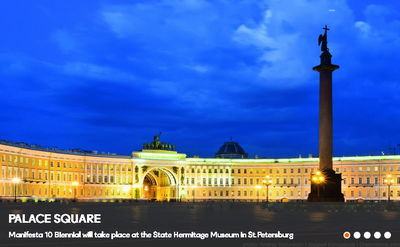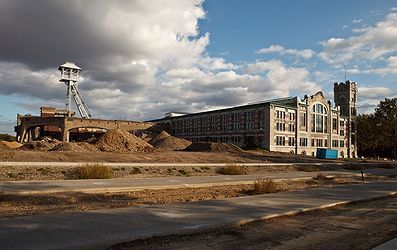22 Aug 2012
Manifesta 9 | Reconversion
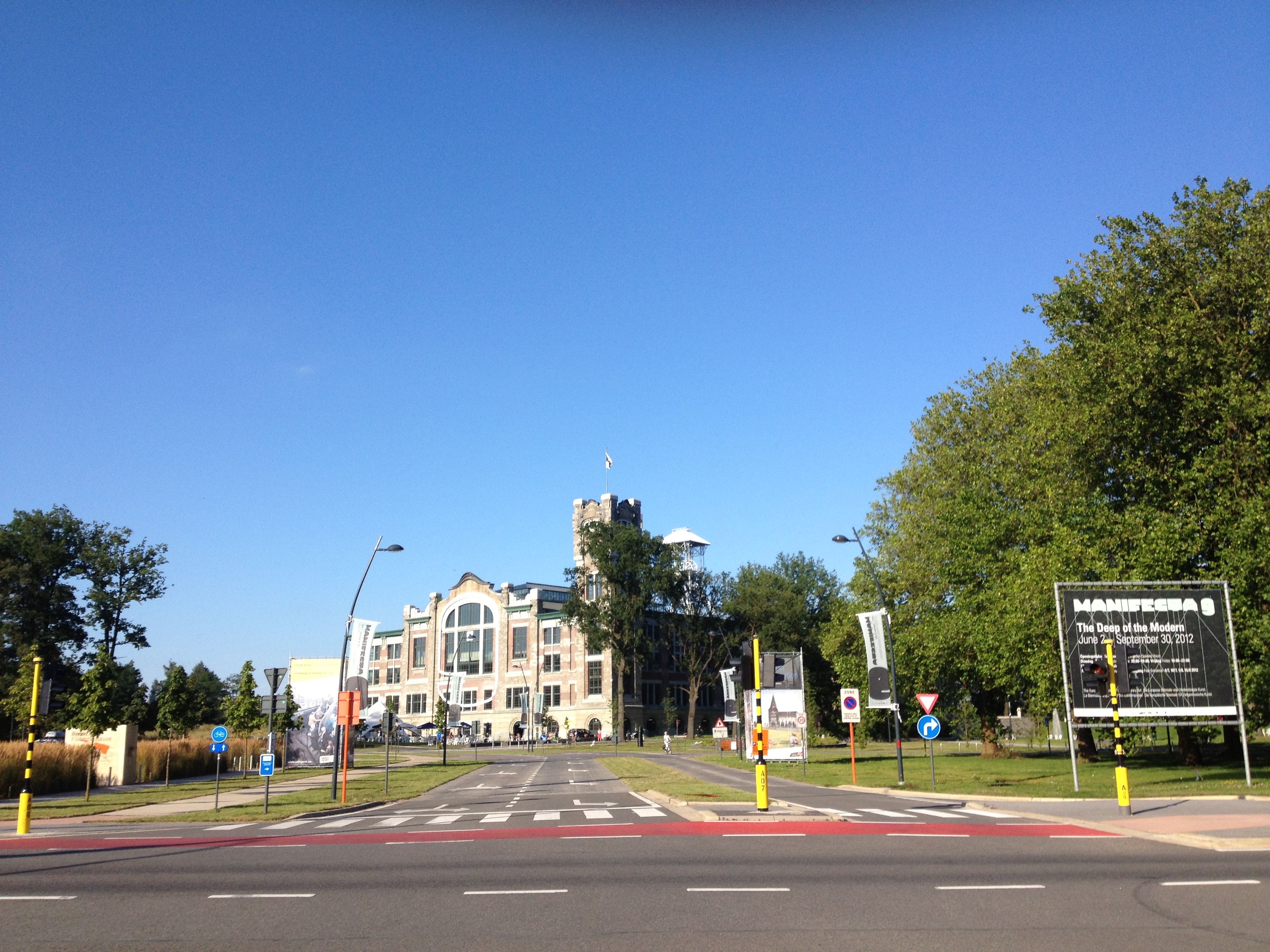
Manifesta is the European biennial of contemporary art, with the special characteristic of being a nomadic show, organised every two years in a different European city. Taking place in 2012 in Genk, Belgium, the title of this year’s show is “The Deep of the Modern”, curated by Cuauhtémoc Medina in association with Katerina Gregos and Dawn Ades. Manifesta 9 is presented in over 23.000 m2 at a former coal mine: a beautiful four-story building that once accommodated the offices, meeting rooms, wash areas, changing rooms and equipment depots of the coal-mining complex.
The exhibition has three different parts: a selection of contemporary artworks – many of them specially commissioned – reflecting on the conditions of industrial production today; a historical section including artworks from the 19th to the early 21st century, all inspired by coal; and a heritage section, with a compilation of material about the history of coal-mining in the region and beyond.
In this article we would like to concentrate on some of the artworks in the contemporary art section, projects that deal with the theme of Manifesta 9, and also to focus on the idea of reconversion (both of industrial production and of mining as a source of energy).
Industrial production upside down
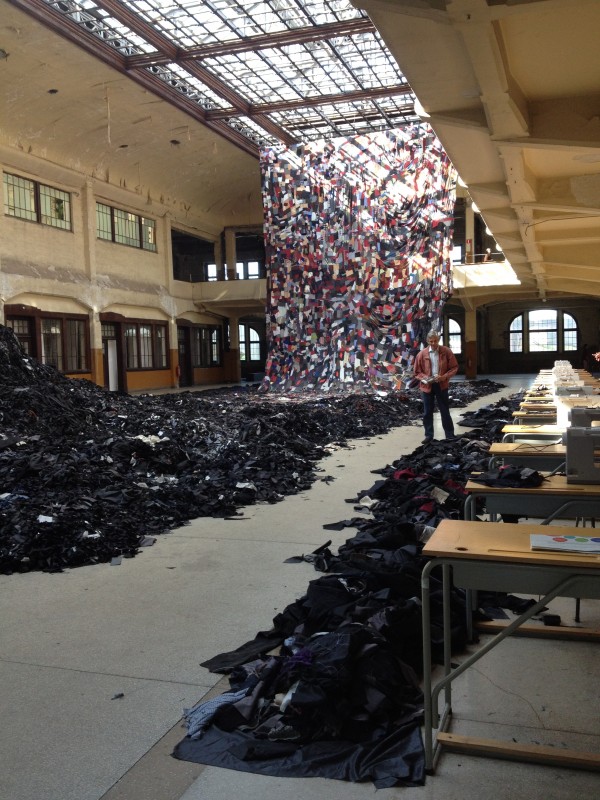 It is interesting to see the number of works dealing with the industrial past of Genk/Belgium/Europe and comparing it with the industrial present of China, rather than other production countries. China is everywhere in the show. One of the most spectacular works at Manifesta 9 is a massive piece of fabric composed of hundreds of small textile rags and surrounded by big heaps of fabric scraps. The work of Haifeng Ni inverts the traditional commercial flow between China and Belgium; it turns today’s clothing production process upside down. The artist took several tons of fabric waste from factories in China and shipped them to Belgium, where they will be sewn together into a huge new piece of fabric, created with the help of Manifesta visitors. For this purpose, a line of sewing machines has been set up, imitating a textile workshop. But, as often happens with public-collaborative projects, after just a few days of use almost all the sewing machines had broken; apparently not due to technical problems, but because people don’t know how to work with this kind of technology anymore. Now visitors can only use the sewing machines under supervision.
It is interesting to see the number of works dealing with the industrial past of Genk/Belgium/Europe and comparing it with the industrial present of China, rather than other production countries. China is everywhere in the show. One of the most spectacular works at Manifesta 9 is a massive piece of fabric composed of hundreds of small textile rags and surrounded by big heaps of fabric scraps. The work of Haifeng Ni inverts the traditional commercial flow between China and Belgium; it turns today’s clothing production process upside down. The artist took several tons of fabric waste from factories in China and shipped them to Belgium, where they will be sewn together into a huge new piece of fabric, created with the help of Manifesta visitors. For this purpose, a line of sewing machines has been set up, imitating a textile workshop. But, as often happens with public-collaborative projects, after just a few days of use almost all the sewing machines had broken; apparently not due to technical problems, but because people don’t know how to work with this kind of technology anymore. Now visitors can only use the sewing machines under supervision.Tomaž Furlan’s rudimentary self-constructed metal prostheses are used in his performances, which consist of himself repeatedly doing single absurd actions. For example, the artist creates a device that enables him to squeeze Coca-Cola cans as if he were a recycling machine. Furlan’s objects remind one of industrial production machines, but also make fun of the super-specialisation of service industries, raising the question of whether alienating labour is a thing of the past.
And right next to this work we find “China: Manufacturing” (2005), a series of photographs by Edward Burtynsky which capture the interior of industrial factories, with hundreds of people working in traditional Fordist mass production lines, manufacturing coffee machines and other products to be shipped from China around the world. These extraordinary images show the huge number of people working in the factories and the surreal perfect order of the work places.
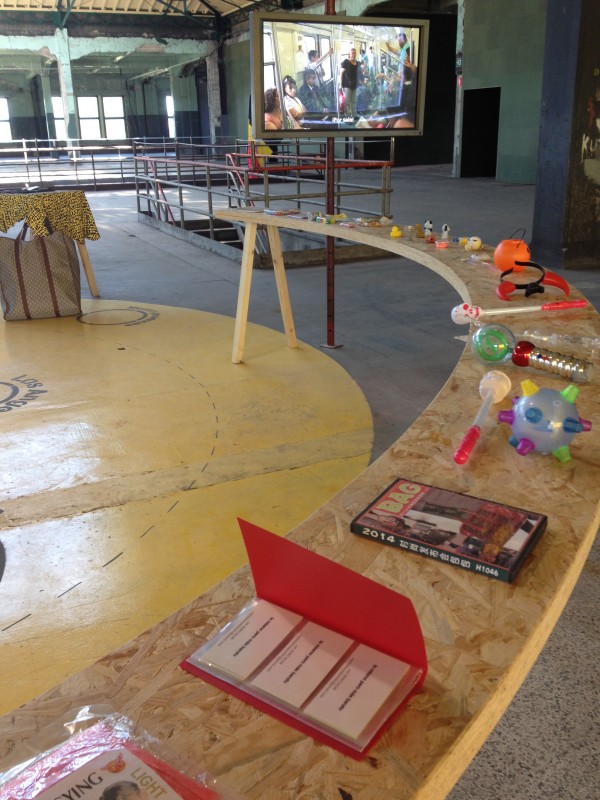 Jota Izquierdo investigates the Special Economic Zone (SEZ) of Guangzhou, one of China’s regions allowed to have special free market-oriented policies and more flexible governmental measures, in order to stimulate commerce. The project examines how products and copies of successful foreign brands are imported and sold in Mexico City and Valencia. In revealing interviews with some of the people involved, we find out how this whole process works, about their expectations and motivation to engage in such business.
Jota Izquierdo investigates the Special Economic Zone (SEZ) of Guangzhou, one of China’s regions allowed to have special free market-oriented policies and more flexible governmental measures, in order to stimulate commerce. The project examines how products and copies of successful foreign brands are imported and sold in Mexico City and Valencia. In revealing interviews with some of the people involved, we find out how this whole process works, about their expectations and motivation to engage in such business.Sources of energy upside down
Many of the works at Manifesta 9 deal with coal as a former main source of energy. Some engage with the past and others take the theme of energy sources such as nuclear power, raising questions about the future: what will our energy sources look like in some years’ time?
At the start of the nuclear era, and for quite some time, this was thought to be the future, a clean, effective, cheap source of energy, but soon the other side of nuclear energy started to emerge: contamination through radioactive waste, the possibility of exhaustion of source materials, and the Chernobyl and Fukushima disasters. All this has shattered the dream of unlimited free energy. The Chernobyl accident is referred to in Claire Fontaine’s reproduction of a neon sign from Pripyat, the city next to the power plant, once a dream of energy self-sufficiency. Lina Selander’s video revisits the history of the disaster and also proposes a subtle reflection on nuclear energy. In another work, Selander exposed photographic paper to low-level radioactivity, which formed beautiful abstract figures, in contrast with the process.
Rossella Biscotti’s “The Conductor” (2012) floor sculptures look like a homage to Carl André’s minimalist floor pieces which consisted of metal plates intended not only to be looked at but also to be walked on. But Biscotti’s pieces are not constructed out of common industrial materials; they are actually recycled cablework from the decommissioned Ignalina nuclear power plant in Lithuania. And visitors are not allowed to step on them.
What our energy future will look like is still an open question, but one thing is clear, nuclear history is not over at all and, while Germany has announced the closure of all its nuclear plants, China has one of the most ambitious nuclear programmes in the world, with 26 nuclear power plants under construction, according to the International Atomic Energy Agency.
One step forward and two steps back. Recently, after two months as a nuclear-free nation during May and June 2012, Japan restarted its nuclear programme. This ended the hope that the shutdown of Japan’s nuclear power plants (for safety checks) would lead to a permanent shutdown.
Short and to the point
Some of the details of Manifesta 9 are remarkable, like the provision of a clear overview of artists and spaces. The artworks exhibited mostly speak for themselves but, wisely, each piece carries a short explanation, a few sentences that help the visitor quickly understand additional aspects of the projects.
Manifesta 9 creates a focused, well-organised and well-structured exhibition, rather than a sprawling mega-biennale. In contrast with the madness seen at many other biennales – too many artists, too many locations, no time to see things properly – Manifesta is, for the first time in its history, concentrated in only one venue, and can be seen in just one day.
Without knowing the background and reasons for the curators to opt for this compact exhibition format – whether financial or a deliberate choice – the result is a concise exhibition: short and to the point. Can we blame the economic crisis for that contraction, or should we be grateful that biennales are becoming less pretentious?
Manifesta 9 is open until September 30 2012
Authors’ biography
Llobet & Pons are a Spanish visual artist collective based in Berlin. They have participated in residencies in European and Asian countries, for example at Akiyoshidai International Art Village (AIAV) in Japan; Seoul Art Space Geumcheon in South Korea and Platform Garanti in Turkey. They have also presented their works at international art spaces like Studio1 – Bethanien and The Process Room at the Irish Museum of Modern Art. In 2012 they will be residents at Lokaal01, Belgium and Hangar, Spain.
Images: courtesy Llobet & Pons
1. Manifesta Venue, former Waterschei mine in Genk, Belgium
2. Ni Haifeng, Para-Production (2008), textile shreds, sewing machines, work in progress, variable dimensions
3. Jota Izquierdo, Capitalismo amarillo, Special Economic Zone (2011-12), multi-media installation, variable dimensions
Similar content
posted on
15 Aug 2011
posted on
16 Aug 2012
posted on
12 Nov 2012
posted on
20 Jun 2014
posted on
18 Jan 2012
posted on
17 Oct 2011



